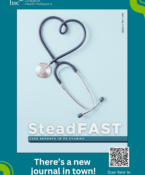Trial to determine if warm leg baths can reduce high blood pressure
By Jan Jarvis
Elizabeth Temples, 77, sinks her legs into a tub of soothing warm water and settles in to relax with a good book.
But it’s not a spa day. Temples is participating in a study investigating if a warm leg bath can lower blood pressure in older women with hypertension.
“I don’t get to read a lot because I have to stop every 15 minutes and track how warm my legs are,” said Temples, a great-grandmother who lives in McKinney. “But it feels great soaking.”
The approach is simple, but it could have a big impact on women with high blood pressure.
Lower-leg heat therapy could be a way to lower blood pressure in women who do not respond to medications as well as men do, said Steven Romero, PhD, Assistant Professor of Physiology and Anatomy and Director of the Human Vascular Physiology Laboratory. The leg baths are an easy way to potentially improve their health and well-being, he said.
“Most women are open to immersing their legs in a bucket of warm water,” Dr. Romero said. “It’s easy to do while they’re relaxing at home.”
Participants in the study soak their lower legs for 45 minutes, four times a week. They also monitor their blood pressure before and after the leg bath. The water is heated to a therapeutic 104 degrees, a temperature used in hot tubs.
“I think that heat therapy has a high potential to lower blood pressure in women who may be on several medications but are still unable to effectively control their blood pressure,” Dr. Romero said. “Our trial is just rolling out, but our preliminary data suggests that it is very beneficial.”
It is known that heat applied in the right dose and duration can improve a person’s health and wellbeing, Dr. Romero said.
“We believe that a number of populations might benefit from this therapy beyond those with hypertension,” he said.
The five-year trial is funded by a $2.9 million grant from the National Institutes of Health awarded to Dr. Romero and co-principal investigator Dr. Qi Fu, MD, PhD, Associate Professor at the University of Texas Southwestern Medical Center.
Women 65 to 85 years old who have high blood pressure despite taking medications qualify for the study. Neurological, vascular health and blood pressure assessments are included. Participants are also provided with a lower leg spa for in-home therapy sessions.
This approach appeals to those who are unable to exercise regularly to improve their blood pressure.
“So far, compliance has been excellent,” Dr. Romero said. “They’re not just doing it. They’re enjoying it.”
Temples said she doesn’t feel any different but she has noticed her blood pressure has gone down after a bath.
“It looks like it might really help people with high blood pressure,” she said.
Anyone interested in learning more about this study should contact Amy Moore, RN at 817 735-2088 or email amy.moore@unthsc.edu.






Social media